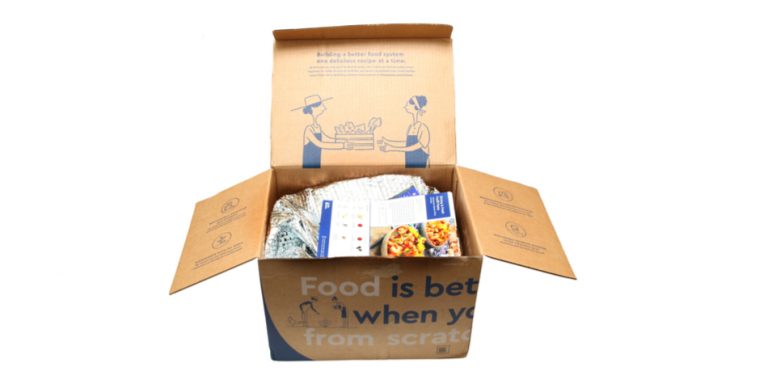Blue Apron Holdings Inc (NYSE:APRN) unquestionably was the worst initial public offering of 2017 — and that’s saying something. The mess that was the Snap Inc (NYSE:SNAP) IPO got more attention, but Blue Apron stock went pretty much straight down from its $10 IPO price.
Indeed, APRN closed 2017 off 60% in barely six months, and that was after its IPO price was slashed to $10 from an initial range of $15-$17. Blue Apron stock has started off 2018 on the wrong foot as well, falling about 7% so far after a rally in December.
I thought that rally was a sucker’s rally, and I wrote toward the end of last month that APRN likely was headed to zero. I still believe that’s the case. It’s likely that Blue Apron’s business model isn’t actually sustainable. And with competition intensifying, the company has no room to change its pricing strategy to protect margins.
In that context, it’s worth looking at the options market for Blue Apron to show just how pessimistic traders are toward the stock. That alone should be yet another warning sign when it comes to APRN. That said, if an investor sees the business differently, those markets offer an opportunity to make reasonable returns even if APRN’s decline continues.
Blue Apron Options

The above chart shows the profit and loss for a January 2019 multi-leg option trade. The three legs of the trade are:
- Sell Jan 2019 $3 call at $1.50
- Sell Jan 2019 $3 put at 80 cents
- Buy Jan 2019 $4 call at $1.05
Essentially, the trade is an iron butterfly, without the final out-of-the-money put. But what is particularly noticeable about the trade is that breakeven is at $1.75 — 53% downside from the current price. In other words, the trade remains profitable even if APRN is halved over the next twelve months-plus.
Should APRN rise, an investor still returns 14%. At $3, the trade returns a solid 71% over the year.
This might look like an opportunity for a hedged entry. But it’s not even the simplest hedge. A Jan 2019 $2 put last traded at $0.41; even with commissions, that suggests 20%+ upside with a breakeven point in the $1.60-$1.65 range, about 57% below current levels.
The potential returns look attractive, and the risks somewhat minimal. But an investor needs to ask why, exactly, those returns are on offer. And the answer is that traders are willing to pay those prices to bet against Blue Apron stock.
Pretty much all of the liquidity on the January 2019 options chain is on the put side. And if an investor is willing to go to the January 2020 expiration, similar trades can move the breakeven point near or possibly $1.00. (Bid/ask spreads are exceedingly wide, so it’s difficult to tell without executing the trade exactly what prices are available at the moment.)
In other words, traders in the options market can profit simply by betting, basically, that Blue Apron won’t go bankrupt in the next two years. The problem is that’s not a good bet to take.
Blue Apron Stock Could Go to Zero Soon
The problem is that Blue Apron is burning cash too quickly. So far this year alone, Blue Apron has burned $239 million. It has $266 million left, and roughly $75 million available on its credit facility.
That rate should slow going forward, as the company has spent up this year on new fulfillment centers. But on an operating basis, Blue Apron is in the red and it’s hard to see how that changes.
Management has slashed marketing spend, but that’s hit revenue. Competition is intensifying. 150 different meal kit companies have been founded in the past five years, according to the Wall Street Journal. Many are struggling just like Blue Apron and will resort to discounting as a last-ditch effort.
Meanwhile, Kroger Co (NYSE:KR) is rolling out a meal kit option nationally. Rival Hello Fresh went public in Europe in October, raising cash to augment its U.S. push. Amazon.com, Inc. (NASDAQ:AMZN) can create an offering with its newly acquired Whole Foods business. And restaurant chains ranging from McDonald’s Corporation (NYSE:MCD) to Olive Garden operator Darden Restaurants, Inc. (NYSE:DRI) and Chili’s owner Brinker International, Inc. (NYSE:EAT) are competing on price, limiting the relative value offered by cooking at home.
In the meantime, that revolving credit facility comes due in 2019. And if Blue Apron can’t turn around its business in 2018, it won’t be able to refinance, which could lead to a restructuring as soon as early next year.
That’s why options traders are paying such high prices for Blue Apron puts. And that’s why even seemingly attractive, highly hedged, plays aren’t worth the risk. Even the best-hedged option play loses 100% of its value if Blue Apron stock goes to zero. And that seems like a very possible, if not outright likely, outcome.
As of this writing, Vince Martin has no positions in any securities mentioned.
